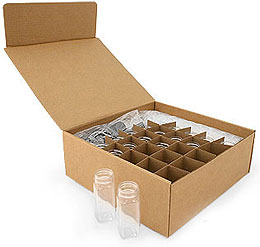Quote:
Originally Posted by satakal

:-D "fluid from the tires." lol.
So, the fluid starts in a reservior under the hood. There's where you or the tech will add fluid if the fluid level looks low. The trick to bleeding the clutch is... the reservior is broken out into little chambers. Kinda like when you buy 12 wine glasses? it comes in a box with a cardboard divider that is 3 down and 4 across.

Only one of those chambers/pockets feeds to the clutch. All the other ones feed to the brakes.
Once the fluid pushy mechanism (I think thats the master cyl but I don't really know) pushes fluid toward any one of the four corners or the tranny, there's no return system for that fluid to get cycled. Think about how your heart pushes oxygenated blood to your toes, ears, johnson, whatever. The "red" stuff gets pushed away from the reservior by the master cylinder (heart) goes and does its job feeding your muscles, then the pressure in your circulatory system pushes that un-oxygenated blood back to the heart and the cycle repeats. With blood, the fluid gets cycled and performs a whole bunch of complete loops of your body.
With the brake fluid, there is no return tubes. So, when brake fluid gets in the lines to the right front caliper, thats where it will live forever. The only way to get the fluid out of any one corner is to suck/push/drain it out. Each place there is a bleed nipple will have to be opened for the system to be able to "burp" and let fluid flow.
I hope that makes sense. The fluid system is a one way system. No return loop. When you work on one corner of the fluid system... you're working on that one corner. If you have a manual, you have 4 corners plus a middle. Middle being the clucth fluid line and nipple.
PS: good thing I didn't explore my first idea too much. Here's where I stopped in my "first draft" of explaining how brake fluid works...
"Bad analogy time. Imagine you killed Neil Patrick Harris and have him cold and dead on an operating table. You have the task changing his.... blood fluid. I suppose all you'd have to do is jam a tube in the push side of his heart, and another tube in the suck side of his heart. " |
I know this is an old thread, but some members think it has great information, however what is written above was authored by someone who knows nothing about hydraulics or automotive brake systems (but remembers some of his high school biology). After I stopped laughing I found I can't help myself to try to clarify.
So if you don't know about brake systems and decide you want to work on them you should really understand how they work. It's your safety after all.
So the brake system operates on the principle that fluid does not compress when pressure is applied to it. Since it doesn't compress, it can transfer energy. So as you press the brake pedal it pushes a piston in a cylinder containing the brake fluid (that is the master cylinder - or "fluid pushy thingy"). Once the pressure in the cylinder is created it transfers the same amount of pressure to the brake caliper (otherwise known as a slave cylinder – it is called a slave cylinder in the clutch system). The brake caliper (or slave cylinder) has a piston in it that moves in the same direction as the piston in the master cylinder and pushes the brake pad against the brake rotor. In the clutch system, the slave cylinder pushes a lever that releases the clutch disk from the clutch plate.
The reason the brake system doesn't have a "return tube" (like your pulmonary system does) is because it wouldn't work with a return path to the master cylinder. If it had a return tube, then the system would never build pressure to move the brake caliper piston because the fluid would follow the least path of resistance and just return to the master cylinder reservoir. The fluid doesn't need to return.
The reason you bleed the rear passenger brake first is because it is the farthest away from the master cylinder and has the greater chance of trapping air (and more quantity of air) in the line. Air in the lines make the brake pedal feel "spongy" (because air does compress) and the braking system less effective. If you have air in the system, it can travel around in the lines, so if you bleed the longer lines first (the rear brakes) there is less chance air trapped in the longer lines will migrate to the front brakes.